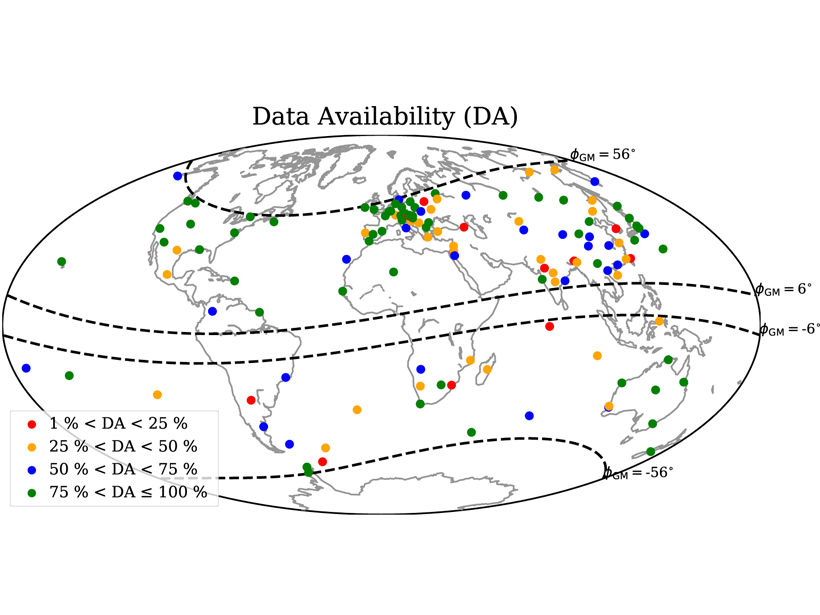Source: Geophysical Research Letters
The Earth’s deep water cycle may include potentially large geochemical reservoirs of hydrogen bound in the crystal structure of certain high-pressure mantle silicates. The mantle transition zone, bound by the seismic discontinuities at 410 and 660 kilometers, demarks a region of the Earth’s mantle with a particularly high water storage capacity owing to the stability of wadsleyite and ringwoodite – high-pressure polymorphs of olivine.
By inverting signals from electromagnetic waves generated in the ionosphere and magnetosphere over a wide frequency range over the past twenty years, detailed electrical conductivity profiles extending to depths in the transition zone have been constructed by Munch et al. [2020] at 20 inland geomagnetic observatories worldwide.
Because of the strong influence of hydration on electrical conductivity of mantle minerals, by combining the electrical conductivity data with seismic structure, the researchers have isolated variable temperature, composition, and potential water content, finding a surprising amount of variability in the mantle beneath different continents.
Whereas the transition zone beneath Europe is consistent with a relatively dry transition zone with less than 0.05 weight percent (wt%) H2O, beneath North America, enrichment to approximately 0.3 wt% H2O is consistent with the conductivity profiles. The observed heterogeneity of mantle water content reflects regional variability from different tectonic settings and mantle dynamics.
Citation: Munch, F. D., Grayver, A. V., Guzavina, M., Kuvshinov, A. V., & Khan, A. [2020]. Joint inversion of daily and long‐period geomagnetic transfer functions reveals lateral variations in mantle water content. Geophysical Research Letters, 47, e2020GL087222. https://doi.org/10.1029/2020GL087222
—Steven D. Jacobsen, Editor, Geophysical Research Letters
Text © 2020. The authors. CC BY-NC-ND 3.0
Except where otherwise noted, images are subject to copyright. Any reuse without express permission from the copyright owner is prohibited.

